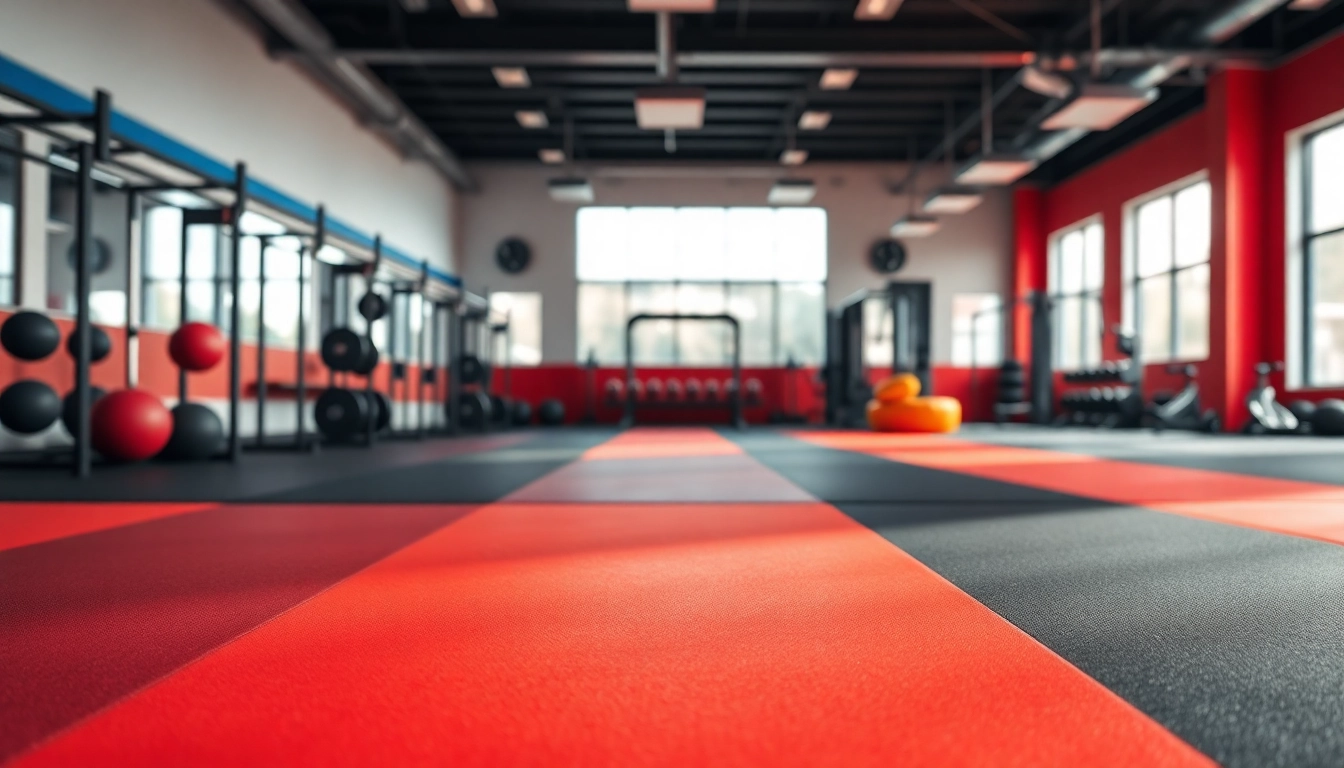Understanding Rubber Flooring
What is Rubber Flooring?
Rubber flooring is a versatile flooring material made from natural or synthetic rubber, designed to provide durability, safety, and aesthetic appeal. With its unique resilience and shock-absorbing qualities, this flooring option has gained popularity across various domains, from residential to commercial and industrial settings. Recognized for its functionality, rubber flooring is available in multiple formats, including rolls, tiles, and mats, catering to diverse needs.
Types of Rubber Flooring Options
Rubber flooring comes in various types, each suited for different applications:
- Rubber Rolls: Ideal for large areas, rubber rolls offer a seamless finish, making them popular in gyms, health clubs, and commercial spaces.
- Rubber Tiles: These provide versatility in design, allowing for creative patterns and easy replacement of individual tiles if damage occurs.
- Rubber Mats: Commonly used in areas requiring additional cushioning and anti-slip properties, such as kitchens and garages.
Common Materials Used in Rubber Flooring
Rubber flooring materials can be broadly categorized into two types: natural rubber and synthetic rubber. Natural rubber, derived from rubber trees, offers high elasticity and resilience but can be sensitive to UV light and certain chemicals. Synthetic rubber, including types like EPDM and SBR, is engineered to enhance durability and resistance against various environmental factors, making it a preferred choice for many commercial applications.
Benefits of Using Rubber Flooring
Durability and Longevity of Rubber Flooring
One of the standout characteristics of rubber flooring is its remarkable durability. Designed to withstand heavy foot traffic, impacts, and abrasions, when properly maintained, it can last for decades. Its resistance to moisture and staining is particularly advantageous in areas subject to spills and humidity, considerably reducing the likelihood of damage over time.
Sound Absorption and Acoustics
Rubber flooring excels in sound absorption, making it a favored choice in environments where noise reduction is crucial. This flooring material helps dampen impact sounds and vibrations, contributing to a quieter and more comfortable setting—ideal for gyms, schools, and office spaces.
Safety Features of Rubber Flooring
Safety is paramount in flooring choices, and rubber flooring shines with its inherent anti-slip properties. The textured surface minimizes the risk of slips and falls, while its shock-absorbent qualities provide cushioning in case of accidental falls. This makes rubber flooring an excellent choice for homes with children or elderly individuals, as well as in high-traffic commercial environments.
Applications of Rubber Flooring in Different Environments
Residential Uses of Rubber Flooring
In residential settings, rubber flooring is favored for areas such as playrooms, basements, and laundry rooms due to its durability and easy maintenance. Homeowners appreciate the variety of colors and styles available, allowing them to customize spaces according to personal aesthetics while ensuring comfort and safety.
Commercial Spaces: Benefits and Considerations
When it comes to commercial spaces, rubber flooring offers several advantages, including easy installation and minimal maintenance. Its durability ensures long-term cost-effectiveness, with fewer replacements needed over time. Businesses also benefit from the aesthetic versatility of rubber flooring, which can enhance the overall look of their establishments. Moreover, the insulation properties of rubber contribute to energy efficiency in commercial buildings.
Industrial Applications of Rubber Flooring
Rubber flooring is widely used in industrial settings due to its high resistance to chemicals and heavy loads. Factories and warehouses benefit from rubber flooring’s durability and slip-resistant properties, ensuring a safer working environment. Its easy clean-up procedure after spills further adds to its industrial appeal, allowing for compliance with health and safety standards.
Installation Process for Rubber Flooring
Preparing the Subfloor for Rubber Flooring
Before installing rubber flooring, it’s crucial to prepare the subfloor adequately. This involves ensuring the surface is clean, dry, and level. Any imperfections should be corrected, as they can compromise the integrity of the flooring over time. If you’re using tiles or mats, a thorough measurement of the area is essential to minimize waste and ensure a proper fit.
Methods of Installing Rubber Flooring
Installation methods differ based on the type of rubber flooring chosen:
- Glue-Down Method: Common for rubber tiles and rolls, this method involves applying an adhesive to the subfloor and carefully placing the flooring on top.
- Interlocking Tiles: These are designed for easy installation without adhesives. Simply fit the tiles together like a puzzle for a secure and stable floor.
- Loose Lay: Some rubber flooring options allow for loose lay installation, where the flooring is laid directly on the subfloor without adhesive, often secured with edges or transition strips.
Maintenance Tips for Rubber Flooring
To maintain the longevity and appearance of rubber flooring, regular cleaning is recommended. This can include daily sweeping and occasional mopping with a mild detergent. Avoid using harsh chemicals, as these can degrade the flooring material over time. Additionally, placing mats at entrances can help reduce dirt and debris tracked onto the floors, preserving their aesthetic and functional qualities.
Choosing the Right Rubber Flooring for Your Needs
Factors to Consider When Selecting Rubber Flooring
When selecting rubber flooring, consider the following:
- Purpose: Identify the primary use of the flooring (residential, commercial, or industrial) to determine the appropriate thickness and type.
- Color and Style: Rubber flooring is available in various colors and patterns. Choose one that complements the design of the intended space.
- Environment: Consider the environmental conditions (humidity, temperature fluctuations) that the flooring will be exposed to for optimal performance.
Cost vs. Value Analysis of Rubber Flooring
While rubber flooring may have a higher initial cost compared to some other flooring options, its durability and low maintenance can lead to significant long-term savings. Evaluating the total lifecycle cost, factoring in installation, maintenance, and replacement frequency, is essential for understanding its true value.
Consulting Professionals for Rubber Flooring Installation
Engaging professionals for rubber flooring installation can ensure a flawless application, particularly for complex projects. Experienced installers can provide insights on the best practices for installation and maintenance, helping to avoid common pitfalls and ensuring the flooring performs optimally for years to come.
In conclusion, whether you are considering Rubber Flooring for a new project or upgrading an existing space, understanding its diverse benefits, applications, and installation nuances will empower you to make informed decisions that align with your specific requirements.


